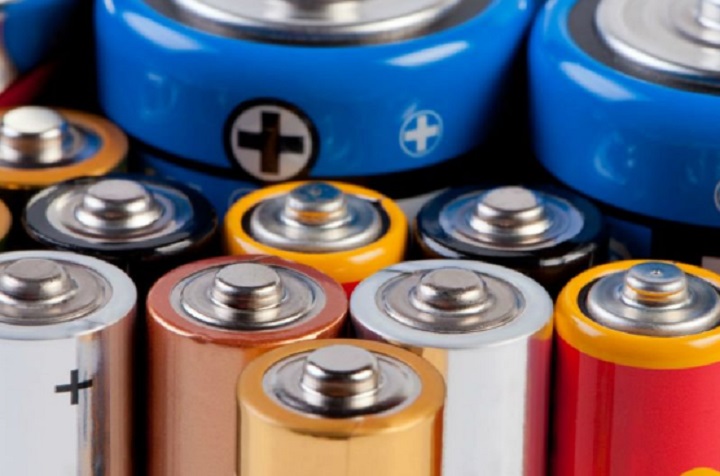
Thanks to technologies like laptops, cell phones, iPods, and electric cars, there is an incredibly high demand of lithium-ion batteries. Lithium-ion batteries are the most desireable battery mix right now because it is rechargeable and a lot of energy can be stored in it. Some particular advantages a lithium battery holds over other batteries are:
-
Weight
The lithium battery is typically a lot lighter in weight compared to other same-sized rechargeable batteries. This is because some of the key components of the battery — lithium and carbon — are very lightweight.
-
Battery Mix
A large part of a lithium battery is, obviously, lithium. Lithium is a highly reactive element, which means that its atomic bonds can store a lot of energy. Because of this, a lithium battery has an extremely high energy density.
To gain a more thorough understanding on just how much energy density a lithium battery has when compared to other batteries, consider a nickel-metal hydride battery (NiMH) and a lead-acid battery. A NiMH battery can typically store about 60 to 70 watt-hours per kilogram, while a lead-acid battery can only store about 25 watt-hours per kilogram. In comparison, these batteries store a lot less energy than a typical lithium battery, which can store 150 watt-hours per kilogram. This means that for every one kilogram of lithium-ion battery, it will take about six kilograms of lead-acid battery to achieve the same watt-hours.
-
Hold Their Charge
A lithium battery loses about 5% of its charge per month, while a NiMH can lose 20% of its charge per month.
-
No Memory Effect
Having no memory effect means that you do not have to discharge the lithium battery completely before you can recharge them.
-
Charge/Discharge Cycles
A lithium battery can handle a lot of charge/discharge cycles — the number ranges in the hundreds.
While lithium-ion batteries have been praised for its benefits, there are also some disadvantages to it. One of the biggest problem of a lithium battery is that it can overheat and burst into flames. It is not a common problem — typically every two or three lithium batteries out of around a million have the problem — but if it does occur, the results are extremely damaging. In some cases, the failure rate of the lithium battery can rise and cause a recall of the product that makes use of the battery. Take, for example, the most recent case in which Samsung had to recall all Galaxy Note 7’s after several reported cases of the phone catching on fire.
Some particular disadvantages a lithium battery holds over other batteries are:
-
Degradation
A lithium battery begins to degrade as soon as they leave the production factory, whether they are put to use or not. The battery can only last two to three years.
-
Cannot Withstand High Temperatures
Heat can cause a lithium battery to degrade a lot faster — they are a lot more sensitive to high temperatures when compared to other batteries.
-
Cannot Completely Discharge It
While you don’t have to wait until they are completely discharged to charge it, if you completely discharge a lithium battery it can get ruined.
-
Expenses
An onboard computer is needed in order to manage a lithium battery. This, in addition to the fact that lithium is rather short-supplied due to high demands, makes producing lithium batteries a lot more expensive than it already is.
-
Fire Hazard
As mentioned above, if a lithium battery fails, there is — while extremely slim — a chance that it can burst into flames. This can be very dangerous and life-threatening.
To gain a better understanding on why the lithium battery behaves this way, the battery chemistries have to be studied.
Inside a Lithium Battery Pack
A lithium-ion battery can come in any shape or size, but on the inside, all lithium-ion batteries are made up of generally the same things. If you were to take apart the battery pack of your laptop — which you shouldn’t do, as this can be an extremely dangerous fire hazard — you can find:
-
Lithium-ion cells
These are cylindrical batteries that look like AA cells. Sometimes, however, they can come in a square or rectangular shape.
- Onboard Computer, which is made up of:
-
Temperature Sensor(s)
There may be more than one temperature sensor in the battery. They monitor the temperature of the lithium ion battery
-
Voltage Converter and Regulator Circuit
This help maintain safe voltage and current levels
-
Shielded Notebook Connector
Allows power and information to go in and out of the battery pack
-
Voltage Tap
Monitors the energy storage of each individual cells in the lithium battery pack
-
Battery Charge State Monitor
This is essentially a small computer that is responsible for the charging process. They help ensure that the battery being charged as quickly as possible to its fullest capacity.
These components of the lithium battery pack helps keep the battery from overheating. For example, if the battery pack gets a little too hot during a charge, the onboard computer may shut down in order to try and cool it down. If your laptop is left in a warm environment, the onboard computer may also prevent you from turning on your laptop until things are cooler.
The components also help track the number of charge/discharge cycles that the lithium battery pack has gone through. Information is also sent out through the onboard computer so people can tell how much energy is left in the battery.
Additionally, if the lithium-ion cells becomes completely discharged, the battery pack will shut down.
On Lithium-ion Cells
Like many batteries, the lithium-ion cell have an outer case made up of metal. The metal case will typically have a pressure-sensitive vent hole to release extra pressure if the battery overheats and has a high chance of exploding due to increased amount of pressure. In addition to the vent hole, there is also a Positive Temperature Coefficient (PTC) switch on the battery that helps prevent the lithium ion battery from overheating.
The metal case on a lithium-ion cell keeps together three thin sheet that are pressed together, drenched in an organic solvent — usually ether. The solvent acts as the electrolyte.The three thin sheets are:
-
A Positive Electrode
This is made up of lithium cobalt oxide, or LiCoO2. When the battery is being charged, ions inside the lithium moves through the solvent (electrolyte) from the positive electrode to the negative electrode.
-
A Negative Electrode
This is made up of carbon. When ions of lithium moves from the positive electrode to the negative electrode when the battery is being charged, the ions attach to the carbon. During discharge, the ions move back to the positive electrode through the solvent (electrolyte) and attach to the LiCoO2.
-
A Separator
This is made up of micro-perforated plastic. It separates the positive and negative electrode, while allowing the lithium ions to move freely through the cell.
When a lithium ion moves through the cell, they do so at quite a high voltage. Each individual lithium-ion battery cell can produce about 3.7 volts — a lot higher than the 1.5 volts found in common AA alkaline cell batteries.
Prolonging Lithium Battery Use
A lithium-ion battery pack is quite expensive — thus replacing a ruined battery can cost quite a lot. If you want to prolong the life of your lithium battery, here are some things you should do:
-
Avoid Completely Discharging Your Battery
The lithium ion chemistry actually prefers a partial discharge than a deep discharge — so avoid using your battery until 0% before charging it. As mentioned above, a lithium ion battery does not have a memory effect thus it actually does not harm the battery when you charge it when it is only at a partial discharge.
-
Keep in Mind that Lithium-Ion Batteries Age
A lithium battery only lasts two to three years, even if they are unused, as mentioned. Don’t avoid using a lithium ion battery pack because you think that it will last five years if you don’t use it. As well, when buying a new lithium battery pack, check the manufacturing date to make sure it is really new. A pack that has been sitting on a store shelf for a year will probably not last you very long.
-
Avoid Heat
As much as you can, avoiding situations where you can overheat your batteries. As previously mentioned, heat can degrade the lithium battery a lot faster than usual.
How A Lithium Battery Can Catch Fire
A fire can occur when the lithium battery gets hot enough to burn the electrolyte. This can typically happen if the separator sheet inside the lithium-ion cell gets punctured and the positive and negative electrodes touch. When the positive and negative electrodes touch, the battery can heat up very quickly. The heat from this can cause the battery to vent the organic solvent that is being used as an electrolyte — it is the same heat that can also light it.
As soon as the electrolyte is ignited in one of the lithium-ion cells, the fire will spread to other cells until the entire lithium battery pack is in flames. When the battery pack catches fire, so does the device that is using the battery — for example, laptops, cell phones, etc.
While these kinds of fires are extremely rare, a number of incidents and some media coverage can be enough for a company to recall all their products that has lithium-ion batteries that are failing.
Featured Image: twitter







